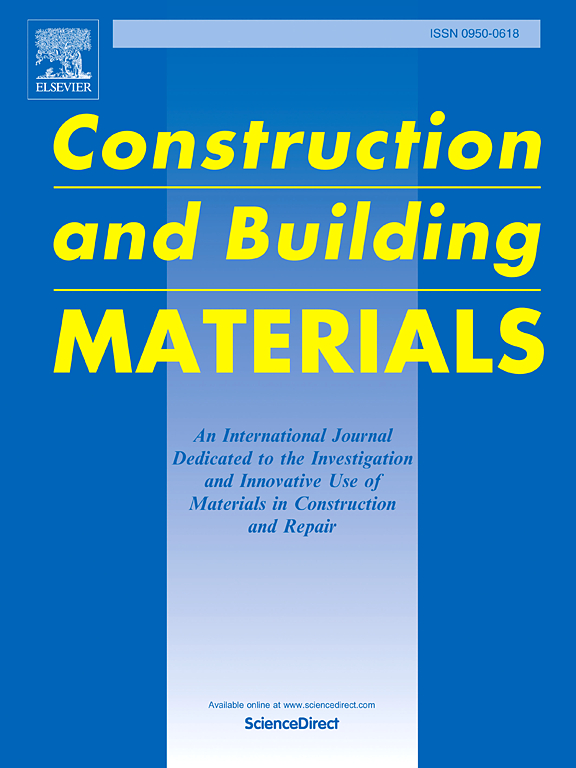Recycled semi-flexible pavement materials: Performance evaluation and applications incorporating reclaimed asphalt pavement
IF 8
1区 工程技术
Q1 CONSTRUCTION & BUILDING TECHNOLOGY
引用次数: 0
Abstract
A preparation method for recycled semi-flexible pavement (RSFP) materials was proposed to improve recycled pavement performance and diversify reclaimed asphalt pavement (RAP) recycling approaches. This study investigated the high-temperature performance, low-temperature performance, water stability, secondary aging resistance, fatigue performance, and engineering applications of RSFP materials. Experimental results show that RSFP materials possess better high-temperature stability and secondary aging resistance than conventional recycled pavement materials. RSFP material performance is directly affected by the asphalt skeleton’s air voids and the cementitious grouting material’s filling rate. A denser and thicker internal cement skeleton enhances high-temperature stability, while a thinner and less continuous structure improves resistance to low-temperature cracking. A lower filling rate results in a more fragmented cement skeleton, which reduces the fatigue life of RSFP materials. Notably, RSFP materials achieve optimal fatigue life at an air void content of 25 %. The application of RSFP materials was validated through two years of monitoring on an experimental road, confirming their suitability for heavy traffic conditions. These findings promote sustainable road construction practices and offer an effective solution for utilizing RAP in high-traffic infrastructure.
再生半柔性路面材料:结合再生沥青路面的性能评价与应用
为了提高再生沥青路面的性能,丰富再生沥青路面的再生途径,提出了一种再生半柔性路面材料的制备方法。研究了RSFP材料的高温性能、低温性能、水稳定性、耐二次老化性能、疲劳性能及工程应用。试验结果表明,与常规再生路面材料相比,RSFP材料具有更好的高温稳定性和耐二次老化性能。沥青骨架的空隙率和胶凝注浆材料的填充率直接影响材料的性能。更致密、更厚的内部水泥骨架提高了高温稳定性,而更薄、更少连续的结构提高了抗低温开裂的能力。充填率越低,水泥骨架碎片化程度越高,rspfp材料的疲劳寿命越短。值得注意的是,RSFP材料在气孔含量为25% %时达到最佳疲劳寿命。通过两年的实验道路监测,验证了RSFP材料的应用,确认了其在繁忙交通条件下的适用性。这些发现促进了可持续道路建设实践,并为在高交通基础设施中利用RAP提供了有效的解决方案。
本文章由计算机程序翻译,如有差异,请以英文原文为准。
求助全文
约1分钟内获得全文
求助全文
来源期刊

Construction and Building Materials
工程技术-材料科学:综合
CiteScore
13.80
自引率
21.60%
发文量
3632
审稿时长
82 days
期刊介绍:
Construction and Building Materials offers an international platform for sharing innovative and original research and development in the realm of construction and building materials, along with their practical applications in new projects and repair practices. The journal publishes a diverse array of pioneering research and application papers, detailing laboratory investigations and, to a limited extent, numerical analyses or reports on full-scale projects. Multi-part papers are discouraged.
Additionally, Construction and Building Materials features comprehensive case studies and insightful review articles that contribute to new insights in the field. Our focus is on papers related to construction materials, excluding those on structural engineering, geotechnics, and unbound highway layers. Covered materials and technologies encompass cement, concrete reinforcement, bricks and mortars, additives, corrosion technology, ceramics, timber, steel, polymers, glass fibers, recycled materials, bamboo, rammed earth, non-conventional building materials, bituminous materials, and applications in railway materials.
 求助内容:
求助内容: 应助结果提醒方式:
应助结果提醒方式:


